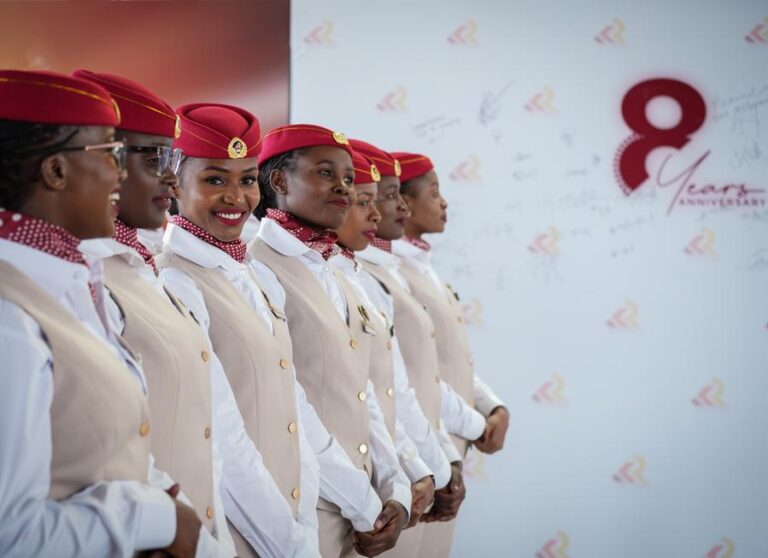“The Mombasa-Nairobi SGR has connected us across different counties. I urge my countrymen to embrace the railway system because it is safe and creates jobs for my generation,” said a Kenyan assistant train dispatcher.
NAIROBI, Oct. 13 (Xinhua) — Nestled in the remote southeastern Kenyan county of Makueni, the tranquil village where Damaris Mutinda grew up showed few signs of modernity, yet, it nurtured a spirit of resilience and determination in young residents like her.
After finishing high school, Mutinda moved to the capital, Nairobi, for college, where she majored in international relations and studied Chinese.
In 2021, she began working on the China-built Mombasa-Nairobi Standard Gauge Railway (SGR), a flagship project under the Belt and Road Initiative, which has been operational since May 2017.
Mutinda initially served as a track and signal safety officer. After extensive training and aptitude assessments, she earned a position as a safety dispatcher at the Dispatch Center — the “heart and brain” of the SGR — becoming the first and only female employee.
Working alongside more than 20 male colleagues, Mutinda spends her days ensuring that trains run safely and that everyone working along the railway corridor remains out of harm’s way. The 29-year-old is also responsible for recording the construction and maintenance plans of each on-site work team before and after operations.
“We monitor the centralized traffic control system and make sure that we grasp how it operates. In case we encounter an emergency, we handle it,” Mutinda said, her voice calm and confident.
Her fluency in Chinese also allowed her to work as a translator. “Here, my Chinese is useful for bridging the gap between Kenyans and Chinese,” she said.
With her professionalism and warm personality, Mutinda has earned accolades from colleagues, standing out as an accomplished female technician thriving in a traditionally male-dominated field amid the country’s railway modernization efforts.
Feng Xudong, who leads the transportation and dispatch department in Africa Star Railway Operation Company, the operator of the Mombasa-Nairobi SGR, described Mutinda as diligent, eager to learn, and highly dedicated to her work.
“She also enjoys reading Chinese books and has a strong passion for Chinese culture,” Feng added.
Festus Mutunga, an assistant train dispatcher, said that working with Mutinda over the past one and a half years has been a rewarding experience due to her technical expertise and interpersonal skills. “We are happy to work with her.”
Today, Mutinda is a role model for many local young people. She draws inspiration from female leaders in Kenya and neighboring countries, admiring their ability to overcome stereotypes, thrive, and leave a lasting impact on society.
Her parents, both small-scale farmers, have been amazed by their daughter’s career achievements, expressing pride in her work within the railway sector.
Mutinda sees the Mombasa-Nairobi SGR as central to Kenya’s journey toward modernity, fostering greater connectivity, trade, and investment along its corridor.
“Through it, we have seen the volume of goods and passengers we can deliver every day,” said Mutinda. “I hope my country can see how this train has been successful with over eight years of operation and zero accidents.”
As of Aug. 16, the Mombasa-Nairobi SGR has achieved 3,000 days of safe operation. It has transported a total of 15.93 million passengers and 41.96 million tons of cargo since opening, according to official data.
“The SGR has connected us across different counties. I urge my countrymen to embrace the railway system because it is safe and creates jobs for my generation,” she added.■

